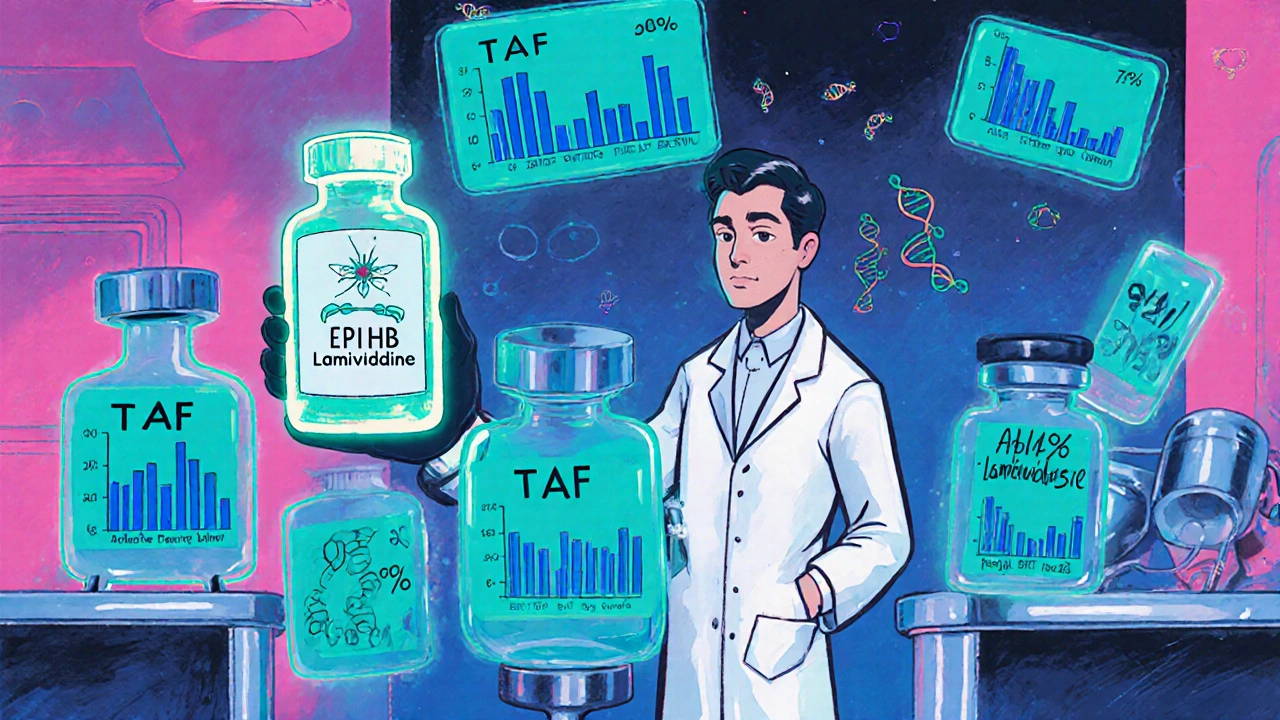
HBV Antiviral Comparison Tool
Select Medications to Compare
Comparison Summary
Selected Medications
When treating chronic hepatitis B, Epivir HBV (Lamivudine) is a nucleoside analogue that blocks viral DNA synthesis. compare Epivir HBV with other options and you’ll see why doctors pick one drug over another based on efficacy, resistance risk, safety and cost.
Why the Choice of Antiviral Matters
Chronic infection with Hepatitis B virus (HBV) can lead to cirrhosis, liver cancer and premature death. Modern therapy doesn’t cure the virus, but powerful antivirals can suppress replication to undetectable levels, slowing disease progression. The catch is that HBV can develop resistance, especially when the drug’s barrier to mutation is low. Picking the right medicine means balancing three core goals:
- Maximum viral suppression
- Low chance of resistance
- Minimal side‑effects for the patient
Below we walk through how Epivir HBV stacks up against the most widely used alternatives.
Key Players in HBV Antiviral Therapy
Besides Lamivudine, five other agents dominate current guidelines (2024‑2025 updates):
- Tenofovir disoproxil fumarate (TDF) - an oral nucleotide analogue with a high genetic barrier.
- Tenofovir alafenamide (TAF) - a newer pro‑drug delivering the same active molecule with lower kidney and bone toxicity.
- Entecavir - a guanosine analogue that also boasts a high barrier to resistance.
- Adefovir dipivoxil - an older nucleotide analogue, less potent but still used in select cases.
- Pegylated interferon‑α - an injectable immune modulator, not a nucleos(t)ide analogue, but occasionally considered for finite‑duration therapy.
All these agents belong to the broader class of nucleos(t)ide analogues, which mimic natural nucleotides and halt viral DNA polymerase.
Clinical Efficacy at a Glance
Clinical trials and real‑world cohorts consistently rank these drugs by the proportion of patients achieving undetectable HBV DNA after 48 weeks of therapy:
| Drug | Undetectable HBV DNA % | Barrier to Resistance (Low/Medium/High) | Key Safety Concerns |
|---|---|---|---|
| Tenofovir disoproxil fumarate (TDF) | 90‑95 | High | Renal function decline, bone mineral loss |
| Tenofovir alafenamide (TAF) | 92‑96 | High | Reduced renal & bone impact vs TDF |
| Entecavir | 85‑90 | High | Generally well‑tolerated, rare lactic acidosis |
| Lamivudine (Epivir HBV) | 60‑70 | Low | Minimal renal toxicity, mild GI upset |
| Adefovir dipivoxil | 55‑65 | Medium | Nephrotoxicity at high doses |
These numbers illustrate why most guidelines now list TDF, TAF, or Entecavir as first‑line therapy, reserving Lamivudine for specific scenarios (e.g., pregnant women early in pregnancy or where cost is a major barrier).
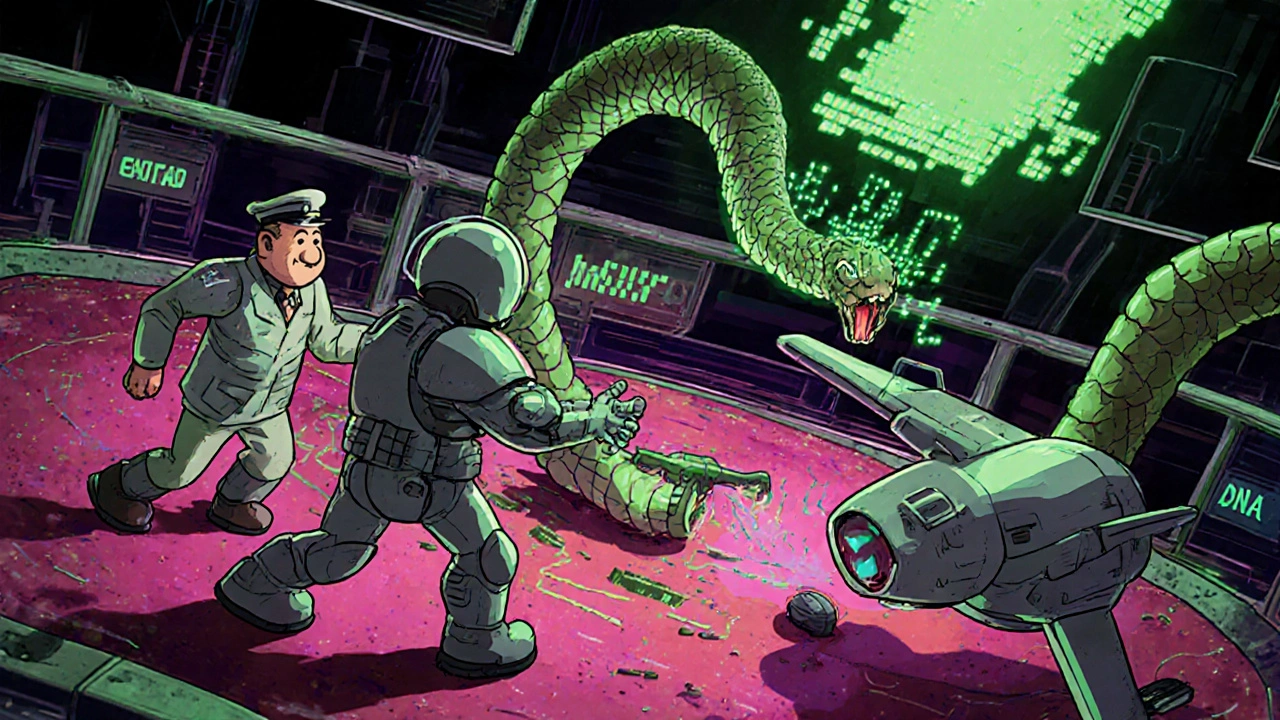
Resistance Profiles - The Long‑Term Factor
Resistance emerges when HBV mutates the polymerase gene. The lower the drug’s genetic barrier, the quicker resistance can appear. Here’s a quick look at cumulative resistance rates after five years of uninterrupted therapy:
- Lamivudine - 20‑30% develop the YMDD mutation, rendering the drug ineffective.
- Entecavir - <5% in nucleos(t)ide‑naïve patients; resistance jumps if given after Lamivudine failure.
- Tenofovir (TDF/TAF) - <1% resistance reported worldwide.
- Adefovir - ~5% resistance, usually in combination with Lamivudine‑resistant strains.
Because resistance can lead to breakthrough viremia and liver flares, clinicians prefer agents with a high barrier for anyone expected to stay on treatment for more than a few months.
Safety and Tolerability - What Patients Feel
Adverse‑event profiles differ more by organ system than by drug class. Below is a concise safety snapshot:
| Drug | Renal Impact | Bone Health | Other Notable Effects |
|---|---|---|---|
| Lamivudine (Epivir HBV) | None reported in routine dosing | None | Mild nausea, headache |
| Tenofovir disoproxil fumarate | May reduce eGFR, especially in older adults | Loss of bone mineral density over years | Rare Fanconi syndrome |
| Tenofovir alafenamide | Minimal impact on kidney function | Preserves bone density | Generally well‑tolerated |
| Entecavir | No significant effect | No significant effect | Rare lactic acidosis, especially in liver failure |
| Adefovir dipivoxil | Nephrotoxicity at doses >10 mg/day | Potential bone loss with long‑term use | GI upset |
For patients with pre‑existing kidney disease or osteoporosis, TAF or Entecavir become the safer choices.
Cost Considerations - Affordability in Real Life
Price often decides the prescription, especially in public health systems. Approximate annual wholesale acquisition costs (2025 USD) are:
- Lamivudine (Epivir HBV) - $180
- Tenofovir disoproxil fumarate - $850
- Tenofovir alafenamide - $1,200
- Entecavir - $1,100
- Adefovir dipivoxil - $460
While Lamivudine is cheapest, its low barrier to resistance can make it more expensive in the long run due to the need for rescue therapy.
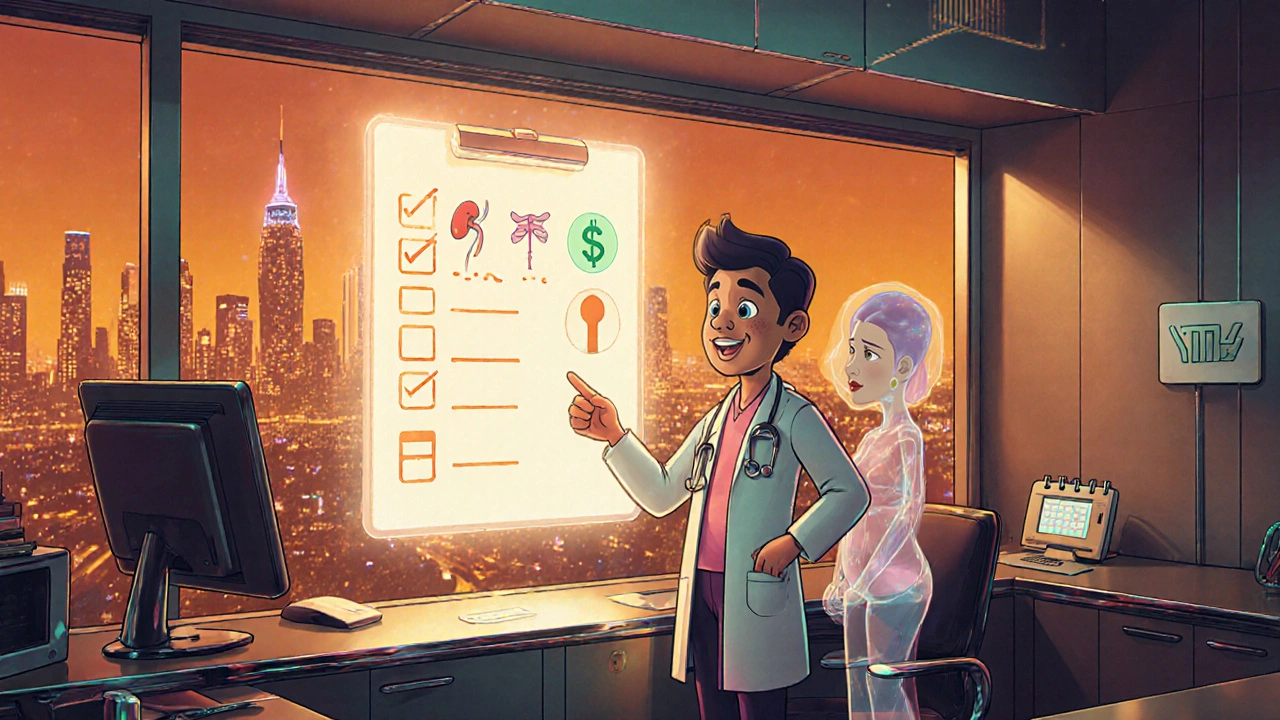
When to Choose Epivir HBV (Lamivudine)
Guidelines list Lamivudine for very specific circumstances:
- Pregnant women in the first trimester who need immediate viral suppression and cannot wait for insurance approval of pricier drugs.
- Patients in low‑resource settings where cost is the dominant factor and close viral‑load monitoring is feasible.
- Short‑term bridge therapy while awaiting results from resistance testing.
Even in these niches, clinicians must counsel patients about the ~25% chance of resistance within two years and arrange for regular HBV DNA checks.
Decision‑Making Checklist for Clinicians
- Assess baseline renal function (eGFR) and bone density.
- Determine if the patient is nucleos(t)ide‑naïve.
- Check for pregnancy or plans for pregnancy.
- Evaluate insurance coverage and out‑of‑pocket cost.
- Set up a monitoring schedule: HBV DNA every 3‑6 months, ALT, and renal labs.
Using this checklist helps match the right drug to the right person.
Future Directions - New Agents on the Horizon
Research continues into finite‑duration cures. Agents like capsid assembly modulators (e.g., JNJ‑6379) and RNA interference therapeutics (e.g., ARC‑520) are in late‑stage trials. Until they become widely available, the existing nucleos(t)ide analogues remain the backbone of chronic HBV management.
Is Lamivudine still recommended as a first‑line therapy?
No. Current international guidelines favor Tenofovir (TDF or TAF) or Entecavir as first‑line agents because they achieve higher viral suppression and have a much lower resistance risk. Lamivudine is reserved for special cases such as early pregnancy or low‑resource settings.
How often should I get blood tests while on Lamivudine?
After starting therapy, check HBV DNA and liver enzymes (ALT) at 3‑month intervals until the virus is undetectable, then every 6‑12 months. Renal function should be checked annually, although Lamivudine itself is not nephrotoxic.
Can I switch from Lamivudine to Tenofovir later?
Yes. In fact, guidelines recommend switching to a high‑barrier drug (Tenofovir or Entecavir) if resistance develops or if long‑term therapy is anticipated. Overlap for a short period is safe, but resistance testing should guide the change.
What are the main side‑effects I should watch for?
Lamivudine is generally well‑tolerated. Common complaints are mild nausea, headache, or fatigue. If you develop severe abdominal pain, swelling, or unexplained bruising, contact your doctor promptly-these could signal rare but serious reactions.
Is there any benefit to using Lamivudine in combination with other antivirals?
Combination therapy is not routinely recommended for chronic HBV because monotherapy with a high‑barrier drug is sufficient. However, in cases of multidrug‑resistant HBV, a physician may add Lamivudine to Tenofovir or Entecavir under specialist supervision.
Ericka Suarez
Wow, this whole lamivudine debate is just another example of how our healthcare system gets tangled in politics and profit. The data shows lamivudine is cheap, sure, but its low barrier to resistance makes it a ticking time bomb for patients. If you care about long‑term health you gotta push for the high‑barrier drugs even if they cost more. Remember, cutting corners now leads to bigger crises later! The drama of cheap meds vs real protection is real and it’s heartbreaking.
Jake Hayes
Lamivudine’s resistance rates are unacceptable compared to TDF, TAF, or entecavir.
parbat parbatzapada
Listen, they don’t tell you the truth in the glossy brochures. Every time a pharma giant pushes a cheap drug like lamivudine, they’re hiding the fact that it’s a gateway for the virus to mutate faster, like some secret weapon of the elite. It’s not just about cost; it’s about control. The genetic bar‑rriers? They’re a myth-engineered to keep us dependent. I’ve read leaked memos where they discuss “acceptable resistance levels” as a way to keep the market churn going. Nobody wants a cure out there; a cure would ruin the entire profit pipeline. That’s why they keep shoving TDF and TAF as “first‑line” while quietly nudging patients toward lamivudine in low‑income regions. The data table they show is clean, but the footnotes are missing the real story-how many patients end up with super‑resistant HBV because of early lamivudine exposure? And the side‑effects? Minimal renal toxicity? Sure, but the long‑term cost of resistance is invisible on the balance sheet. The whole system is like a house of cards, built on the illusion of choice while the strings are pulled from board rooms. You think it’s just a drug choice? It’s a battlefield of hidden agendas. So next time you read a glossy article, ask yourself: who benefits from you taking the cheap pill?
In short, the “cheap” option is a trap, a Trojan horse, and the only way out is informed vigilance and demanding transparency from the agencies that claim to protect us.
Casey Cloud
If you’re looking for a quick guide Lamivudine is less potent and has a low resistance barrier you’ll see higher failure rates over time It’s best used in pregnancy or when cost is a major issue for the patient Consider switching to TAF or Entecavir for better long‑term suppression and safety profile
Eli Soler Caralt
It’s fascinating how the choice of antiviral mirrors a philosophical dilemma-short‑term convenience versus long‑term integrity 🌱 lamivudine may seem like the easy path but it raises questions about the integrity of our healthcare decisions 🤔
In the grand tapestry of medicine, perhaps we should strive for solutions that honor both patient welfare and systemic sustainability 🌍💡
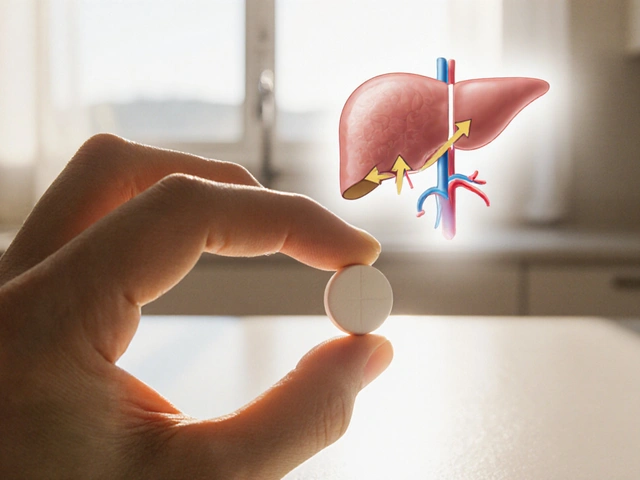

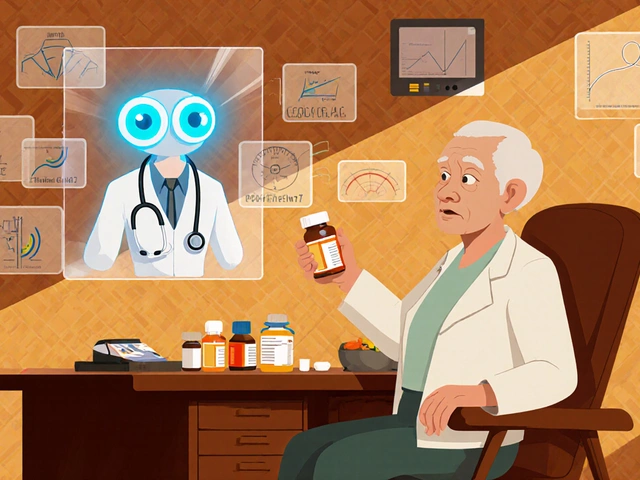
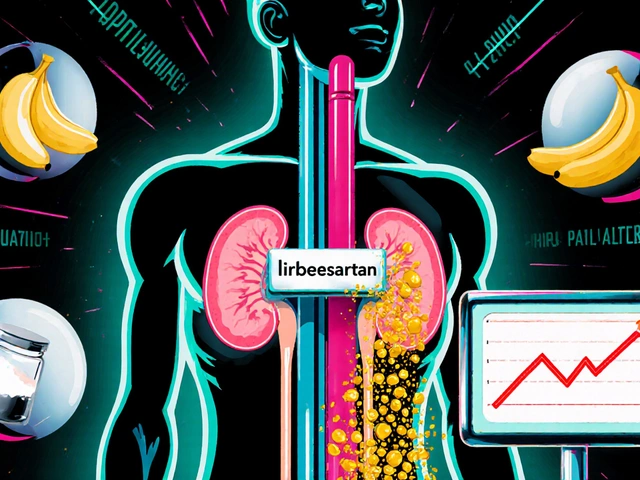

Write a comment